United States Taiwan Defense Command
| United States Taiwan Defense Command | |
|---|---|
.svg.png) Badge of the USTDC | |
| Active | December 1954 – April 1979 |
| Country |
|
| Type | Sub-unified command |
| Size | 30,000 troops from Combined Arms and branches |
| Part of |
|
| Garrison/HQ |
HSA Compound, Yuanshan, Taipei |
The United States Taiwan Defense Command (USTDC; Chinese: 美軍協防台灣司令部; pinyin: Měijūn Xié Fáng Táiwān Sīlìng Bù) was a sub-unified command of the United States armed forces. It was originally formed as the Formosa Liaison Center (founded in 1955 after the signature of the Sino-American Mutual Defense Treaty of December 1954 and the first Straits crisis of Sept. 1954). In November 1955, the FLC become the Taiwan Defense Command. The command reported directly to the Commander-in-Chief Pacific (CINCPAC). The command was composed of personnel from all branches of the U.S. armed forces and had its headquarters in Taipei. The first commander of the USTDC was Alfred M. Pride, Commander, U.S. Seventh Fleet.
USTDC was a planning headquarters for the defense of Taiwan and the Pescadores. In the event of hostilities, the USTDC commander would have coordinated with the Government of the Republic of China in the defense of Taiwan and the Pescadores. In the event of such a contingency, three existing service commanders would have reported to the U.S. Taiwan Defense Command commander. The 327th Air Division commander would be the air component commander, the Taiwan Patrol Force commander would be the naval component commander (the Taiwan Patrol Force being drawn from the United States Seventh Fleet), and the Chief of the Military Assistance Advisory Group China (the MAAG) would be the Army component commander. The 3rd Tactical Fighter Wing, Thirteenth Air Force, at Clark Air Base in the Philippines had reinforcement air defence functions for Taiwan for a period.
During the mid-to-late 1960s, the Naval components of the Command controlled 4 Navy Frigates, 1 Destroyer, 12 Fast-Attack Missile Boats/Corvettes, 6 attack Submarines, along with a wing (12–14 choppers) of Bell AH-1 SuperCobra Naval attack Helicopters and Coastal Defence Artillery. The US Garrison on Wuchiu Island included a battery from the 81st Field Artillery Regiment fielding MGR-1 ballistic missiles along with 2 Infantry Rifle Companies from the 15th Infantry Regiment, 1 Company from the 75th Ranger Regiment, a squadron of 9 UH-1 transport helicopters, a forward Naval SIGINT base and listening post and 14 Navy fast transport boats.
In May 1967, Carlos Talbott of the U.S. Air Force became chief of staff of the command. From July 1968 – September 1970 the chief of staff was Brigadier General John A. Des Portes, U.S.A.F. In September 1970, Clarence J. Douglas, also of the Air Force, assumed duties as chief of staff.
The Command held its final flag retreat ceremony during the afternoon of 26 April 1979. Rear Admiral James B. Linder was the last military officer to depart Taiwan on 28 April 1979.
The former site of the USTDC headquarters became the Taipei Fine Arts Museum in 1983.
List of commanders
| Name | Rank | Portrait | Tenure |
|---|---|---|---|
| Alfred M. Pride | Vice Admiral | 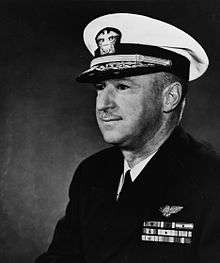 |
April 1955 – November 1955 |
| Stuart H. Ingersoll | Vice Admiral |  |
November 1955 – July 1957 |
| Austin K. Doyle | Vice Admiral | .jpg) |
July 1957 – September 1958 |
| Roland N. Smoot | Vice Admiral | 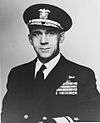 |
September 1958 – May 1962 |
| Charles L. Melson | Vice Admiral | 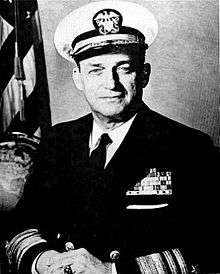 |
May 1962 – July 1964 |
| William E. Gentner Jr. | Vice Admiral | 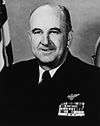 |
July 1964 – July 1967 |
| John L. Chew | Vice Admiral | 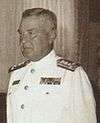 |
July 1967 – August 1970 |
| Walter H. Baumberger | Vice Admiral | August 1970 – September 1972 | |
| Philip A. Beshany | Vice Admiral | 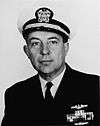 |
September 1972 – August 1974 |
| Edwin K. Snyder | Vice Admiral | August 1974 – August 1977 | |
| James B. Linder | Rear Admiral | August 1977 – April 1979 |
See also
References
| Wikimedia Commons has media related to United States Taiwan Defense Command. |
- http://ustdc.blogspot.com
- Biography of Lt. Gen. Carlos Talbott, from the United States Air Force at Archive.is (archived 2012-12-12)
- Biography of Brig. Gen. Clarence J. Douglas, from the United States Air Force at Archive.is (archived 2012-12-12)
- High Seas Buffer: The Taiwan Patrol Force, 1950–1979 – Naval War College